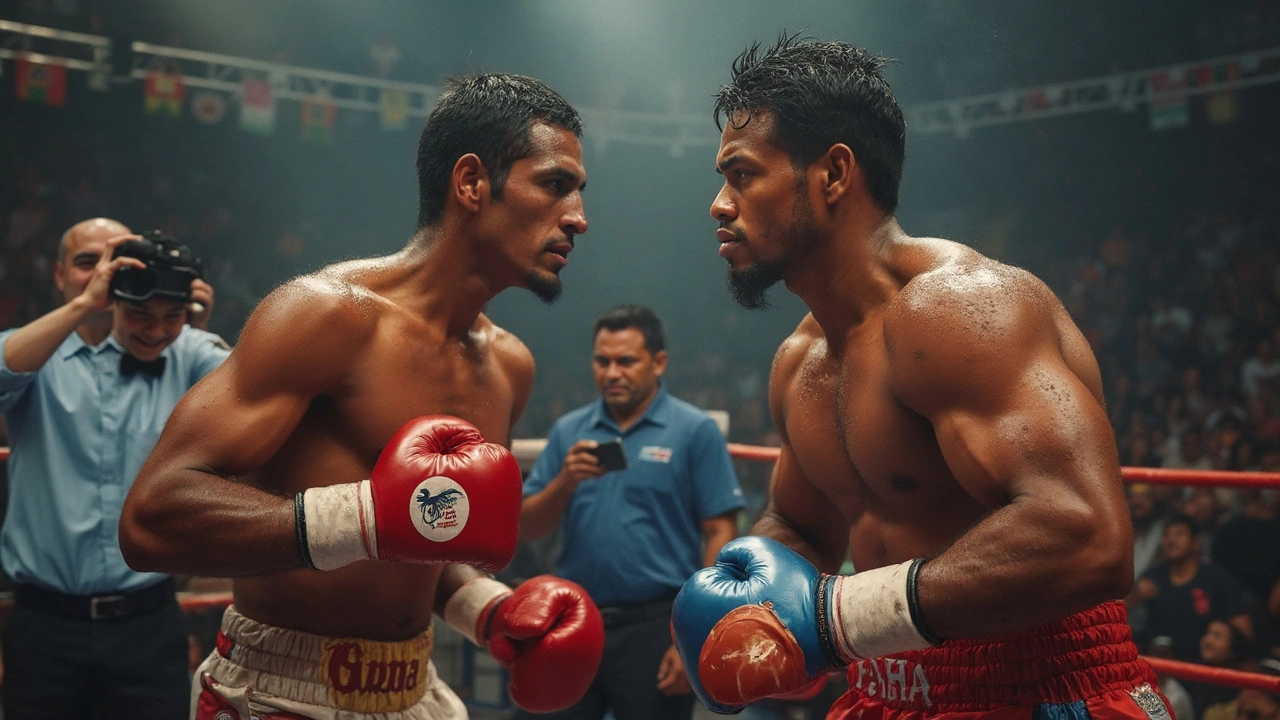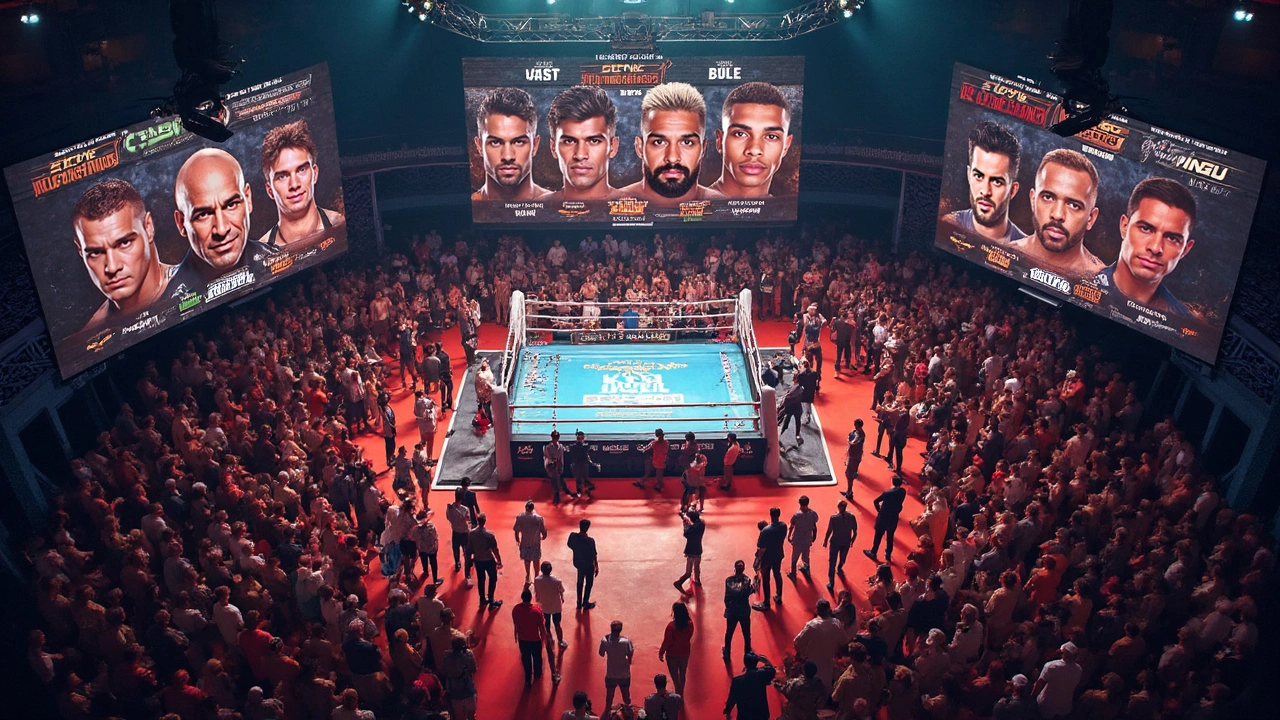You’re sitting ringside, the crowd’s buzzing, popcorn’s flying, and the lights suddenly cut low. Every seat’s filled, from old-timers clutching fading magazine clippings to kids barely keeping their eyes open past bedtime. The announcer’s voice booms through the arena, and you know—right then—the main fight is about to start. This is the moment everyone’s paid for; nothing else tonight matters more. But what’s this main fight actually called? It’s not just any label—it’s the heart and engine of the entire boxing show.
What is the Main Fight Called in Boxing?
The boxing world doesn’t beat around the bush. That massive, show-stopping bout at the top of the card? It’s simply called the “main event.” The main event is the centerpiece, the reason the arena’s packed, why the pay-per-view lights up, and why the undercard sometimes barely gets a mention in the next morning’s headlines. This isn’t some throwaway match. The main event carries the night’s heaviest expectations: it often features the most popular or highest-ranked fighters, and usually has the most at stake.
In a typical boxing card, you have several fights building up as the crowd trickles in. These early bouts—known as the “undercard”—are crucial for up-and-coming fighters to gain exposure. But when folks talk about the night’s fight, they’re talking about the main event, pure and simple. Sometimes, you might hear it called the “headliner” or, if there’s a world championship on the line, the “title fight.” But even if it’s not for a belt, the main event is still the attraction that pulls in the dollars and gets fight fans’ hearts pounding.
Here’s something not everyone knows: main events aren’t always titles fights. Sometimes, they’re “Eliminators”—fights where the winner earns a shot at the champion next. Other times, they feature stars who don’t currently hold a belt but command huge fanbases—think about when Manny Pacquiao fought Adrien Broner in 2019, or all those blockbuster Floyd Mayweather fights where the belt almost seemed secondary. Some main events have no title, but the storylines, personalities, and stakes are enough to break records. All that energy, all those spotlights, gather here—in the main event.
And just a bit of history—main events used to be much longer affairs. In the early twentieth century, some main events went up to 15 rounds. After the tragic death of Duk Koo Kim in 1982, the World Boxing Council decided to cut the maximum rounds for championship fights to 12. Most modern main events—especially when a title is at stake—are 12 rounds of up to three minutes each. Non-title main events might sometimes be set for 10 rounds, but more often than not, promoters want the night’s best for last—fully scheduled and ready to go the distance if needed.
Promoters spend big on main events, and the fighters earn the biggest purses. The gap between a headliner’s payday and the first undercard fight isn’t just big—it’s ginormous. And sure, there are exceptions, but try finding a better paying job than being the main event on a Vegas fight weekend. You’d have better luck selling snow to the Eskimos.
Finally, main events aren’t just about the throws and blows; they’re a business strategy. Broadcasters set their schedules around them, marketing teams build hype campaigns, sponsors put cash behind commercials and in-arena signage—every bit of boxing’s glitz and glamour climaxes in that final, most-anticipated fight. So, when you’re talking about the main fight in boxing, remember: it’s not just a slot on the night’s schedule; it’s the reason the night exists in the first place.

Why the Main Event Matters: Importance in Boxing Culture and Business
The main event is more than just the highlight on the poster. For fans, it’s the pay-off: the moment they’ve slogged through traffic or forked out their hard-earned cash to see. For fighters, it’s a career checkpoint—a shot at legacy, a fat paycheck, and possibly a highlight-reel moment the world won’t stop replaying on social media. Even my son Jasper, who’s more into cricket than gloves, knows when the main event’s about to fly—the excitement is contagious, even in the lounge room in Brisbane.
Boxing’s history is littered with unforgettable main events. Think Ali vs Frazier in 1971—“The Fight of the Century.” Or Mike Tyson walking out in black trunks, the world holding its breath. Those were more than fights; they were cultural earthquakes that rippled out well beyond the ring. The main event doesn’t just settle sporting disputes—it creates moments, sometimes myth, that stick in the memory bank.
On the business side, the main event is bread and butter. Pay-per-view companies shape prices and advertising based on main event fighters. When Canelo Alvarez fought Gennady Golovkin, ticket prices shot through the roof, not because the undercard was stacked, but because everyone wanted to see those two meet. TV rights, merchandise, ring sponsorships—these flow in large part thanks to the anticipation built around the main event. Organizers usually stack the undercard to create build-up or to give rising stars some shine, but make no mistake—the big money bets on the event at the top.
Main events also fuel rivalry and hype. Social media buzz, pre-fight trash talk, even press conference brawls—these all get turbocharged because people know what’s at stake. And there’s another layer: when a main event features a title on the line, that extra bit of prestige dials everything to eleven. It’s not just about being stronger or faster—it’s about owning the story. Legacies are built and sometimes broken in the main event slot. You lose big here, and the whole world sees it. You win big and kids like Leona will be re-enacting your knock-out in the backyard for weeks.
Interestingly, fighters negotiate hard for main event slots. Not just for money—although, trust me, they care about that—but for career momentum. A memorable performance as a headliner can shoot a boxer from the mid-tier straight to global superstardom. Look at Anthony Joshua—his headline fights at Wembley have been massive box office hits, turning him from a promising heavyweight into a global sensation. No other spot offers that blend of pressure and possibility.
Betting markets also focus almost entirely on the main event. If you ever wander into a Brisbane pub before a big fight, you’ll see folks huddled around their phones, debating odds and prepping bets. Even the local news will talk about the main event and rarely mention undercards. The sense of occasion and the chance for something wild—upsets, shock knockouts, impossible comebacks—draws everyone in. So, when fans talk about a boxing night, they’re really talking about the main event. Everything else, while important, serves as the warm-up band before the lead act takes the stage.

How Boxing Cards are Structured: From Undercards to Main Events
Every great boxing night is like an album—carefully arranged, each fight building towards that final dramatic note. A typical boxing card is split into two big chunks: the undercard and the main event. Sometimes, there’s a special “co-main event,” but even that’s just the last warm-up before the real show.
The undercard is where future stars, prospects, and crowd-pleasing local boxers get their moment. These fights might not get the spotlight, but they matter more than you think. Whether it’s an Olympian taking their first steps in the pro scene, or a former champ attempting a comeback, these contests serve as the opening act for the night. Promoters often sprinkle in crowd favorites or local heroes to keep the audience hooked and the energy high before the big showdown. Tickets are usually cheaper for undercard fights, and venues still fill up slowly as the crowd waits for the main event.
- Main fight in boxing: The main event comes last—always. The energy, anticipation, and camera angles hit a climax here. Sometimes there’s incredible pressure: if there’s a late injury and the main event falls through, the whole card can collapse in value. Fans might even ask for refunds. No other sport has quite the same high-wire act.
- Co-Main Event: Sometimes, big promotions add a “co-main event,” typically a top-tier match designed to keep viewers entertained right before the main event. In rare cases, co-main events can overshadow the main event if the headliners deliver a dud, but that’s the exception.
- Special Attractions: Occasionally, you get “special attraction” fights, like a crossover champion or a celebrity bout—these are more about fun and hype than rankings. Still, the focus returns to that main event as the clock ticks towards midnight.
Timings are strategic; main events are scheduled for peak viewing hours. In the US, big fights go live by 10pm or even later so that everyone across time zones can tune in. Here in Australia, it’s a bit of a marathon: fans sometimes wake up at 6am to catch international main events live. That just goes to show the draw and influence of a main event—not just locally, but around the globe.
One thing many people miss: fighters warm up, rest, and psych themselves up throughout the night, especially if they’re the last to go on. The atmosphere backstage builds, both tense and electric, as the night edges closer to the big fight. Promoters run a tight ship—you won’t see the main event start before the set TV window—so the build-up can feel like forever for the athletes about to step into the ring.
And after the main event wraps, win or lose, the story’s only just getting started. Post-fight interviews, wild crowd reactions, rematch rumors—these keep the conversation alive for days. As someone who’s seen epic bouts from Brisbane to Sydney, I’ll say nothing matches the buzz of a well-built fight card, rising to a fever pitch right before the main event begins. That’s when boxing feels more like a festival than a sport. All the drama, energy, and tradition circles right back to that all-important slot—the main event—cementing its spot as the most crucial fight in any boxing show.
